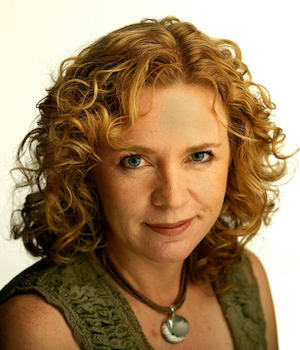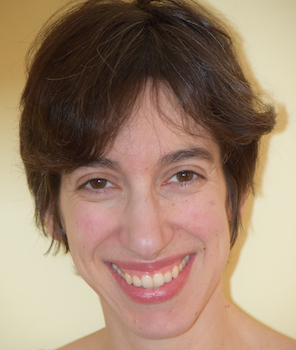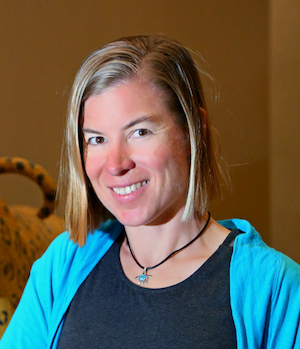The People Behind the Science: Writing Compelling Profiles

Illustration: Yandere Simulator
SAN FRANCISCO—Behind every scientific discovery is a scientist with a story. Getting to the root of how and why researchers do what they do brings light to the human side of science—and there is an art to telling those stories.
Four panelists, each accomplished science profilers, discussed tactics and tips for getting the story behind the science on 26 October in a session titled “Putting Character into Science – the Power of Profiles” at the World Conference of Science Journalists 2017.
John Travis, the managing news editor for Science, opened the panel with a story of when he decided to cut a detail from one profile: that the scientist is gay.
“What level of character information actually drives the story ahead?” asked Travis. The fact that the scientist was gay didn’t add anything to that particular story, so Travis removed the detail, despite a back-and-forth with other editors.
“That’s why profiles are very debatable—some will hate one but will love another.”
In some cases, a person’s sexual orientation might matter to the story, he said, but this wasn’t one of those times. “That’s why profiles are very debatable—some will hate one but will love another,” he said. “That’s why I think they’re fun.”
Building intimacy, maintaining professionalism
The fun of writing profiles should not detract from professionalism between the subject and the journalist, the panelists said.
Australian freelance journalist Jo Chandler spent ten days camped out with a group of scientists in the Antarctic and got to know the gang quite well. She saw them cycle through every emotion on the spectrum, from despair and frustration to determination and happiness.
“The relationships I try to construct in the field allow me to go deeper with the scientists,” Chandler said. “I build intimacy with them.”
“I’m always a journalist, and if it’s relevant to the context of the research, it’s on the record.”
But she was always cautious to keep the relationship professional and to establish rules early on. “I’m always a journalist, and if it’s relevant to the context of the research, it’s on the record,” she said. “I’ve always got my notebook out on the table.”
1. State who you are—a journalist—and be clear if you’re on or off the record.
2. If someone doesn’t want to be in a story, respect that.
3. Use your judgment. If a moment is too intimate, don’t use it.
Yudhijit Bhattacharjee, contributing writer at National Geographic, said he always tells his subjects that no piece of the story will be shocking. “You may not like what I write, but you won’t be surprised,” he said. “Nothing will come out of left field.”
Bhattacharjee stressed the importance of allowing for time while writing a story. Spending longer on a story allows him to probe past the initial research or breakthrough to discover more about the drives and defines of the researcher.
“By the end of the profile, you should figure how the mind works and how that scientist’s personality contributed to the science that they did,” he said.
1. It helps to go back to the source multiple times and, if possible, interview in front of others who know the subject.
2. Dig deeper. When you get the answer, keep digging. They’ve been jaded by answering some questions before, so keep going.
3. Look for a human frame to place the subject, not just the person’s science itself. Human emotions drive the story, and curiosity can stem from them.
Motivation is a major key to unlocking the mystery, said Jennifer Couzin-Frankel, a senior staff writer at Science who makes it a point to always ask about it.
“It seems like a deceptively easy question: ‘What motivates you?’ But it can lead you in all sorts of interesting directions, to find out how they got to where they are today,” she said.
And it’s most important to present the subject how they are and to avoid framing people, she said. “In our quest for drama and to fit the perfect mold of a person, do we risk exaggerating certain details?” Couzin-Frankel said.
1. Think of the story like a movie. This is a good way to get the interviewee to point out bigger moments in his or her life, and it helps you while writing.
2. Consider the subject’s perspective and how to respond to resistance the person might have.
Christie Aschwanden, lead science writer at the website FiveThirtyEight, also cautioned against falling into this trap, specifically when profiling women. Some stories about women in science focus on the subject’s gender and issues such as finding daycare, not her accomplishments, Aschwanden said.
“(It’s) sort of a distraction and that’s not the important thing,” she said. “Write about her as a professional, not as a gender.”
1. Be aware of how you’re framing the profile. Don’t try to put people in a box for how you want the story to look.
2. If you wouldn’t say it about a man, you shouldn’t say it about a woman.
—
Jillian Clemente is a student at West Virginia University studying journalism and wildlife and fisheries management. She aims to explain science and its impact on everyday life through writing. Follow her adventures at jillianclemente.com, contact her at clemente.jillian@gmail.com or on Twitter @West_VirJillian.





